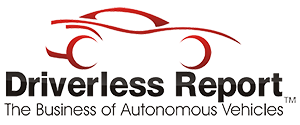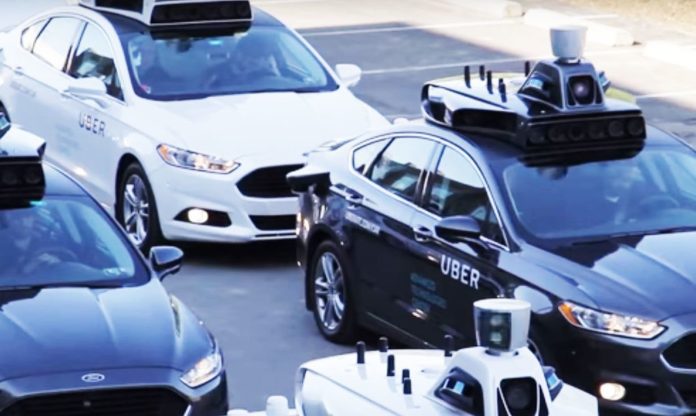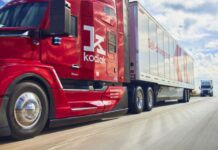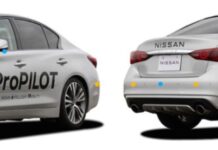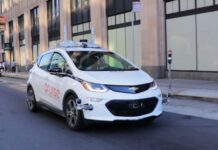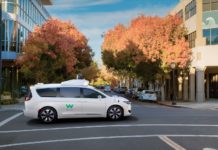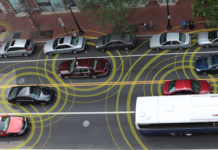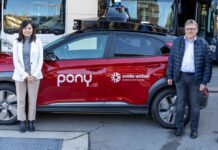“The technology is essentially here… We have machines that can make a bunch of quick decisions that could drastically reduce traffic fatalities, drastically improve the efficiency of our transportation grid, and help solve things like carbon emissions that are causing the warming of the planet.”
Interestingly, this statement didn’t come from a futurist like Elon Musk or Mark Zuckerberg or Jeff Bezos; this was President Obama discussing autonomous vehicles in an interview with WIRED last fall.
Over the last year, we have seen many groundbreaking announcements regarding autonomous cars, from companies like Ford promoting its autonomous vehicle leader to the position of CEO, to Tesla’s NHSTA investigation showing a 40 percent decrease in accidents with Autopilot enabled and Audi beginning mass-market sales of a “Level 3” autonomous car.
Nevertheless, many questions in the world of autonomous vehicles remain unanswered. How will autonomous cars make ethical decisions, as in the case of the “trolley problem”? How will cities, streets and parking change? What will happen to the millions of people employed as ridesharing drivers or long-haul truck drivers? What is the right package of sensors to drive autonomous vehicles?
We believe that many of the open questions about autonomous vehicles will be answered not just by technological innovation but by the emerging business models around autonomous vehicles. For example, if regulators decide to tax autonomous vehicles based on miles traveled within a city, there will be different incentives for vehicles to stay close by to maximize trips and minimize costs. If car companies decide to sell cars directly to fleet operators instead of consumers, they will allocate marketing and research and development dollars differently.
There is no better indicator for how companies will make decisions across many technology, business and societal questions than their underlying business models and profit motives.
Here are what we see as several of the key questions and implications for autonomous vehicles today.
What will the autonomous vehicle operating system look like?
Apple, Google and Microsoft — iOS, Android and Windows. The three biggest companies in the world today all control (or have de facto control of) their own operating systems. Why? Because controlling an operating system is an incredibly important place in a value chain. Operating system providers provide an abstraction layer over hardware (commoditizing hardware providers) and own a direct channel to end users (allowing them to tax anyone else who wants to access those end users).
In the world of servers, desktops, laptops, smartphones and tablets, Apple, Google and Microsoft each have a unique strategy to capture value from their operating system. Apple uses its operating system to extract higher margins on its hardware business, Google uses its operating system to earn more revenue from its ad business and Microsoft charges directly for its operating system and the key applications that run on top of it.
Now, automakers and technology companies are all in a race to build the software that will drive autonomous vehicles, but it’s unclear how those companies will monetize their software. Tesla is pursuing an Apple-like approach, where they will build an integrated hardware-software stack; companies like Baidu and Udacity are building “open-source” self-driving car tech that will help them sell complementary products; and companies like Mobileye and Uber seem to be forging partnerships where they will become software providers to automobile manufacturers.
It is likely that several models will emerge for monetizing the operating system layer for vehicles, and these models will deeply impact how different companies invest in R&D, marketing, lobbying and operations. If the Tesla vertical integration model wins out, expect to continue seeing flashy marketing and sleekly styled vehicles, because high-priced, high-margin “hardware”/vehicle sales will be the main driver of business. If the Baidu “open source” model wins out, expect to see many low-cost automobiles from different manufacturers and Baidu monetizing their open-source software by selling other services.
Some of these consequences are obvious, but there are also some less obvious effects. For example, companies that operate a “closed” hardware/software ecosystem may be less likely to share their data with others, and this could lead to difficulties in developing a national system of legislation for autonomous vehicles because of public concerns around safety and equity. Additionally, if one company ends up taking an early lead but is reticent to share their data or algorithms, they may be able to shape regulation in a way that makes it difficult for others to build competing systems.
How will users pay for transportation? As a service or own cars?
Today, companies like BMW are making a series of bets on what the future will look like for transportation consumption. BMW is continuing to sell cars directly to consumers; however, they are also selling “transportation as a service” where consumers can rent free-floating cars, hail a car with a driver or, in the future, order a car without a driver. Their belief is that people will want to consume transportation differently at different times and in different places, and they want to offer all options through a single app.
On the other hand, companies like Mazda believe that consumers will always want to drive, and they are building/selling vehicles to a “core customer who loves driving.”
These two views are not necessarily at odds with one another, and different segments of the market will want different things. However, the relative sizes of the transportation-as-a-service and the “own a car” markets will change in the future, and it is likely that more people will choose to pay for transportation on demand rather than own a car, which is often an under-utilized asset.
It will be difficult to strike a balance between letting the industry guide regulation and letting regulation dictate what the industry decides to build.
The more we veer toward the transportation-as-a-service world, the more differently car companies will operate in the future. Automobile manufacturers are today the biggest spenders in the entire advertising industry. If consumers no longer purchase cars and only purchase Uber rides and Zipcar rentals, that will drastically change the billions of dollars spent on automobile advertising. It also will change the set of profit pools across the entire automotive industry.
If ridesharing companies can “commoditize” automobiles such that consumers no longer care what type of car they are in to get from place A to place B, they will be able to capture a significant portion of the profits in the transportation industry and reinvest those profits in their technology platforms and marketplaces.
What does it mean if ridesharing companies take more and more revenue and profits away from car and truck manufacturers? One major impact will be that ridesharing companies will be more likely to invest in automation to cut costs rather than focus on ways to employ drivers (who will buy cars), and this could rapidly accelerate the loss of driving jobs. Another major impact would be that car dealerships become less relevant as a distribution channel for cars as ridesharing companies would likely prefer to buy in bulk from automakers to lower costs.
Who generates the data? Who processes the data? And who owns the data?
Autonomous vehicles will both ingest and generate vast amounts of data. Vehicles need driving data to train their neural networks, mapping data to navigate roads and avoid obstacles, regulatory data to understand speed limits and parking regulations and passenger data to create personalized trip experiences suited to each rider. At the same time, autonomous vehicles will be generating terabytes of data each day from cameras, radar, lidar, sonar, GPS and other sensors that can be used to further improve the cars’ driving models, a city’s traffic planning or a ridesharing company’s route optimization algorithms.
This data intake and data exhaust will not only require new infrastructure and software, it also will require new business models around the processing, sharing and usage of data. Already we have seen a number of companies form partnerships to either gain access to or build new sets of data around high-definition maps in order to ensure they have access to a key input to operating autonomous vehicles. Another critical piece of the data puzzle is companies that use human intelligence to produce training data for machines. For the foreseeable future, these “human in the loop” systems will be key to generate high-quality training data and feedback loops.
The issues of who owns data, who can access data and who will process the data will be a critical question for companies and regulators over the next several years. As vehicles generate and consume more and more data, it will be critical to watch who controls the data and how they decide to monetize the data. There likely will be a number of large companies that are built solely around the collection and cleaning of data, and how these companies work with other players in the automotive space is currently being explored.
What portion of the value chain will capture the most value?
In the traditional world of desktop and mobile operating systems, operating systems are able to capture value by commoditizing hardware suppliers and aggregating consumers, so that other application developers have easy access to a development platform with easy-to-use tools and a distribution channel with a large audience of buyers.
In the world of automobiles, this seems to suggest that companies like Uber and Lyft have the best shot at becoming the central point for demand-side aggregation and supply-side commoditization. Ridesharing customers don’t care too much about the actual vehicle they are riding in, and they provide an aggregation point for consumers who wish to access a pool of transportation options. Lyft’s recent announcement to build a new self-driving division and self-driving system for car manufacturers suggests they are looking at this as an important opportunity.
The world isn’t going to flip a switch one day to go from humans driving automobiles to autonomous vehicles.
However, this industry is still young, and everyone — from automotive suppliers like Delphi to pure technology companies like Alphabet — want to make sure they can capture a piece of the transportation value chain. This could happen in many different ways. Perhaps Tesla will be able to develop an integrated supply chain from parts to rides that creates the best possible user experience, or maybe Ford will find a way to bring the most efficient driving software to market that every other manufacturer needs to license.
Companies that are providing higher-level services to consumers and businesses that are in the best position to bring supply and demand together are likely to create the most value and profit pools.
In any case, whoever wins this race to capture profits will be in a position to invest more in research, invest more in marketing and continue to innovate faster than competitors. This will lead to the winners helping to craft the public messages on autonomous vehicles, leading the industry on recommendations for tax policies and working closely with local, state and national officials to reshape cities and society.
What is the impact and role of regulators in the development of autonomous vehicles?
Technology companies have not had a strong history of working with regulators (or with automobile companies), and while companies like Airbnb and Uber have struggled to figure this out, automobile manufacturers, more than anyone else, have a reputation for working closely with the government to understand (and potentially shape) regulations and compliance.
Regulators should and need to be a critical part of the development and introduction of autonomous vehicles. It will be difficult to strike a balance between letting the industry guide regulation and letting regulation dictate what the industry decides to build, but if they can get this right, it will lead to major benefits in terms of reduced traffic deaths, lower emissions and better transportation for everyone.
The world isn’t going to flip a switch one day to go from humans driving automobiles to autonomous vehicles. For a long time to come, human-driven vehicles and autonomous vehicles will co-exist, and this is something that regulators need to keep in mind.
If there is one thing for the general public and regulators to pay attention to in the next 3-5 years, it is how companies plan to make money on autonomous vehicles. The business models will drive decision making, and these decisions will have very important consequences for the future of transportation.


